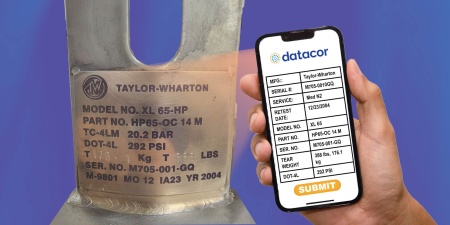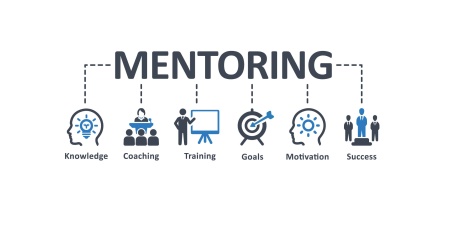Things are changing fast. Virtual online channels are moving the bar for efficiency in distribution ever higher. Customers are demanding fast fulfillment, real-time inventory visibility, and highly personalized service. Legacy distributor systems cannot meet these demands. If the independent distributor is not collecting real-time data with up-to-date technology, the gap between his business and alternative channels may soon become insurmountable.
The Tools
Here are the tools you need to meet customer expectations in 2025.
- State-of-the-art ERP – Enterprise resource planning (ERP) is the foundation upon which you build your digital business. ERP software streamlines and automates functions such as finance, human resources, manufacturing, supply chain, and procurement. This tool is designed to help you keep up with growing customer demand for fast, reliable service. It is important to note that the number of features these systems offer is growing at a fast clip. Stay current!
- Real-time price – In the past, business economics taught us that the best way to improve profit was to grow your sales. Technology, however, has opened up other avenues to improve your margins. With today’s software, you can increase profits with real-time pricing. You can ensure opportunistic buying decisions, raise prices in a systematic manner, control sales force pricing, and capitalize on supplier price increases. The challenge in 2025 is to provide tailored, competitive pricing with better profit margins while keeping customer loyalty.
- VMI initiative – Fastenal, a large U.S. distributor of industrial and construction supplies, has led the way in supplying vendor-managed inventory (VMI) at customer locations. VMI systems utilize advanced technologies to simplify inventory replenishment and track necessary products. These systems improve supply chain efficiency, foster collaboration, and drive predictability for both supplier and customer. With omnichannel capabilities, the customer receives the best product at a competitive price. The traditional independent distributor should be working with a VMI equipment manufacturer now to remain competitive.
- Warehouse Inventory automation – While VMI is improving inventory management at customer sites, inventory control costs at the distributor warehouse are also improving with automation. In a recent article, Anthony Wrighton wrote, “Drones, robots, and virtual reality (VR) might have sounded like science fiction a few years ago, but in industrial operations, they’re becoming everyday tools. With drones reducing inspection risks, robots taking over dangerous manual tasks, and VR transforming training… one thing is clear: digital transformation isn’t just coming; it’s already here.” (How drones, robotics and VR are changing industrial gases, gasworld, Jan 29, 2025).
By deploying warehouse automation, distributors are able to reduce storage capacity by up to 35% and accelerate order fulfillment. Customer satisfaction is enhanced by accurate and timely deliveries. - Predictive forecasting analytics – Today’s AI forecasting software is capable of mining data through predictive modeling and machine learning. AI can analyze historical facts to make predictions about future events. Business predictive forecasting models are available for sales, cost, and profits using various tools and techniques. Generative AI predictive business software such as Microsoft Copilot, IBM Project Ripasso, and Oracle Analytics, are just a few of the products available for distributors.
Digitize as fast as you can
The word is out — or I should say, its initials are — AI. If you are involved in distribution, you will hear AI mentioned in most webcasts, podcasts, and at conferences. It is being incorporated into your business space, and it’s time to get on board. Digitize as fast as you can.
Progressive distributors, their suppliers, and their customers are already using functional ERP, e-commerce, and product content software solutions. A distributor’s current goal for customer digitalized order entry should be at least 30% of sales. That means about a third of your customers are placing orders without direct human interaction with your staff. Data collected via digitalized order entry enables AI applications to analyze customer order frequency, cross- and up-sell, and apply effective pricing trends.
The benefits of AI
Improving order entry is just one of the many benefits of AI. Here are some of the other ways AI can sharpen distributor operations.
- Improving order processing methods – With AI, order processing can be completed using text, emails, faxes, PDFs, or even verbal commands. One software developer sells a system that uses OpenAI ChatGPT, Microsoft CoPilot, or Google Gemini to assist a salesperson using a cell phone. It allows a seller to take a customer request, prepare a quote, and even place the order. Innovative digital developers will come to your company and train your sales, operations, and supply chain employees on their product. Many can have new software operational in a matter of days.
- Training new employees – As experienced employees retire, their wisdom and knowledge base go with them. AI can provide deep learning by analyzing the skill set of experienced employees and then create training materials from that analysis for new hires. Chatbots and virtual assistants can provide on-the-job training for each new work challenge encountered.
- Accelerating Continuous Improvement (CI) – Generative AI enables companies to accelerate their CI planning. It is an agent for constantly improving specific repetitive tasks. AI can analyze performance metrics, identify areas of improvement, and make necessary adjustments to enhance business operations.
- Revolutionizing Sales – The digital transformation has revolutionized the sales process. A salesperson can now present to multiple decision-makers. In preparation for those calls, Generative AI can provide insight into customer needs and each participant’s interests. This informed machine learning process changes the salesperson’s posture toward customer need from reactive to proactive. Salespeople need to become adept at using the powerful sales tools AI offers.
- Creating strategic business plans – AI Smart Analytics uses Application Performance Management (APM) software to create a single integrated digital thread across a company’s whole asset life cycle. This enables your entire executive team — from CEO to finance, operations, sales, and marketing managers — to have insight and input into your strategic business planning.
- Maximizing profits – The adoption of AI is accelerating rapidly. It is important that you understand how the application of these tools impacts your bottom line. A data-driven approach to sales and operations allows distributors to quickly and confidently analyze their asset development for a maximum return on investment.
Conclusion: Meet Customer Expectations in 2025… Digitize as Quickly as you can
Bring your technology up to date today. I know it’s complicated. Use resources like industry associations, cooperatives, and consultants to help you select the right tools for your needs. With the latest technology, you can streamline operations, improve customer service, and stay competitive in today’s market. And remember, as Kim Phelan writes in the “MDM Guide: Tailor Your Tech Strategy to Win in Any Market,” “Customer experience is still the name of the game, whether distributors are contending with ERPs, self-serve e-commerce tools or AI implementation.” (Stay in the Ring!, Kim Phelan, MDM Research Tailor Your Tech Strategy to Win in Any Market).
The overarching goal of a successful distribution business is to provide the best possible customer value, products, and services with ease and efficiency. Becoming more productive with AI tools allows you to grow and prosper. As the cost of entry to these tools continues to decline, the opportunities for improving your return on the investment are enormous.
My advice — to meet your customer expectations in 2025… digitize as fast as you can.
Get more tips and tricks from Art Waskey in The Art of Sales books.










